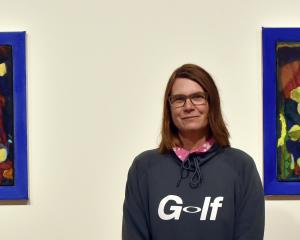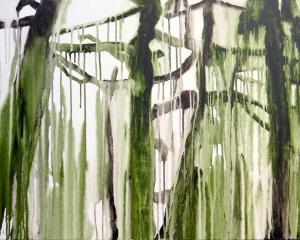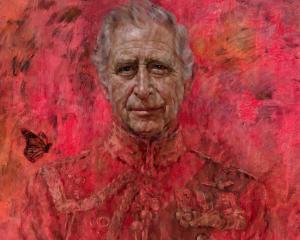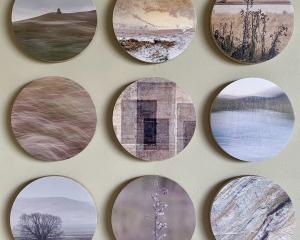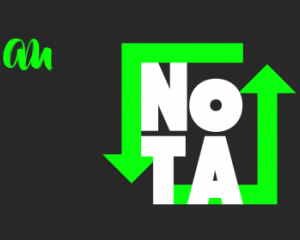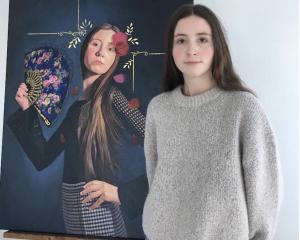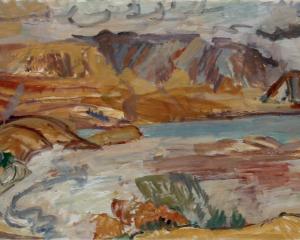
centraalmuseum.nl/nl/tentoonstellingen/de-tranen-van-eros
‘‘The Tears of Eros’’ is a remarkable exhibition focusing on the role of women, both as muses and painters, within the Surrealist movement. The exhibition is based around both surrealism in general and also the work of Utrecht painter Johannes Moesman.
Surrealism was originally almost totally male and considered the female form mainly as a fetish object. While much of this negative attitude still pervades views of the style’s earlier works, the rise of women surrealists such as Leonor Fini and Dorothea Tanning, as well as current artists such as Sarah Lucas and Viviane Sassen, has gone some way towards redressing the balance. The movement has always been one in which shock has played a major role, and this has also always extended into its erotic content, here viewed from both male and female perspectives.
Works by around 20 artists are displayed in the virtual tour, accompanied by narration which explores the works and the nature of surrealism’s view of gender in art. The latter topic is, understandably, one of considerable debate.
The works themselves are fascinating, with memorable images ranging from Felix Labisse’s reimagining of the classical theme of Danae to Lee Miller’s disturbing portrait Tanja Ramm under a bell jar. Understandably, the exhibition should probably carry an age-restriction warning.

artsandculture.google.com/story/overlapping-colors-of-time/agJi5-oaxbjeLQ
The southern Chinese city of Xiamen stands at a historic crossroads. One of the country’s early European trading ports, it is now a rapidly industrialising city. Within that city is a community apart, that of the island of Gulangyu.
Gulangyu was a haven for European settlers in China, and its charms have lent it the nickname of ‘‘The garden on the sea’’. This history has given the art of the island and intriguing blend of East and West, with traditional Chinese art merging with the impressionism and post-impressionism prevalent in the late 19th century when European influence was at its height.
These Western styles are quite prominent in many of the works displayed in ‘‘Overlapping Colors of Time’’, an exhibition focusing on oil paintings with the island as their theme. Sun Cixi’s Impression of the Setting Sun, for example, is a lovely image inspired by Monet both in style and in title, and Dai Je’s Ferry bears strong post-impressionistic leanings. Many of the works are charming. Sun Jingbo’s effective study of a night market and Shao Jingkin’s boldly delineated landscape are among the highlights.
The exhibition is easily viewed as scrollable panels. While a small amount of information is given on the works, more would have been appreciated, even if the English translation isn’t always perfect.

artsandculture.google.com/exhibit/cult-of-the-machine/SAKiFGx3mTcKKQ
San Francisco's de Young Museum is — with the aid of Google — presenting an interesting exhibition on the rise of industry, and particularly the machine, as a subject of art.
Concentrating largely on the rise of precisionist art in the early to mid 20th century, the exhibition does not limit itself to these works, but includes historical backgrounding, photography, sculpture and cinematography.
Charles Sheeler’s strong, but ultimately cold images of factories make up a significant part of the exhibition. There is a stateliness to the work that grants the images an almost religious feel, but simultaneously implies the inhuman nature of the plants. One work on display, by Charles Demuth, is even titled Incense of a New Church, its tendrils of smoke coiling around 20th-century dark satanic mills. This dichotomy is one which pervades much of the art related to machinery: the concept of something which is worthy of pride and respect, but is simultaneously ‘‘other’’ and potentially threatening.
Questions of technology as masterpiece or nightmare return in a poignant juxtaposition of images from the 2015 science fiction film Ex Machina and Charlie Chaplin’s classic 1936 comedy Modern Times. These leave us to ponder whether machines support us or we support them, and exactly where the ethical line is drawn between human and machine.

